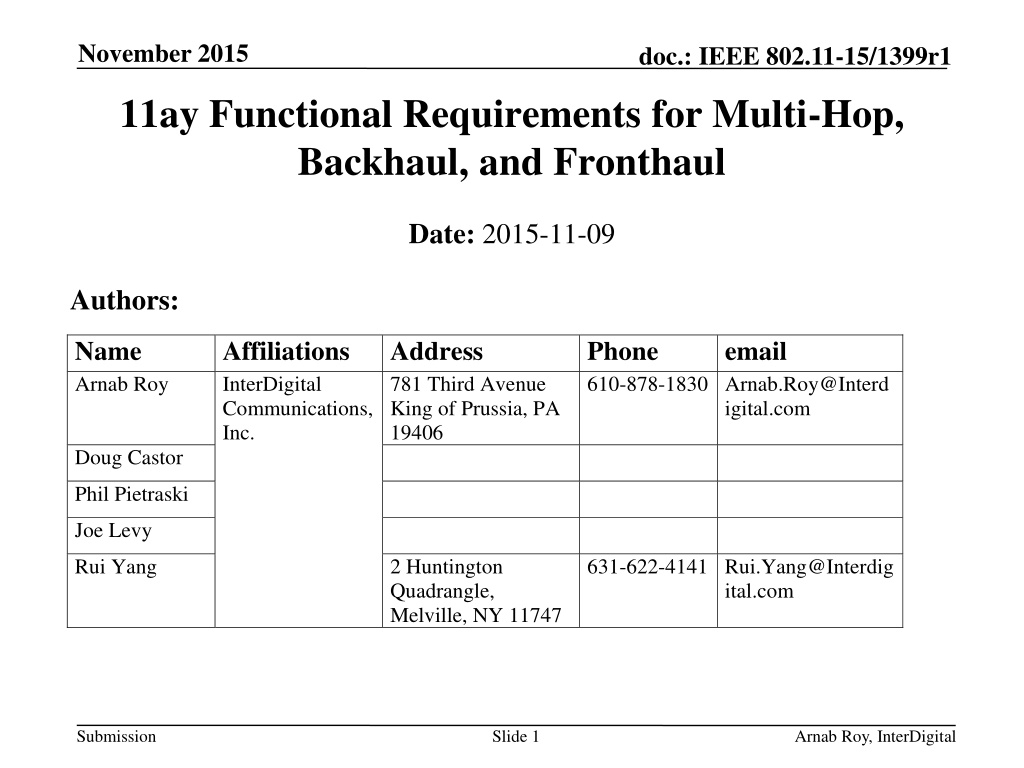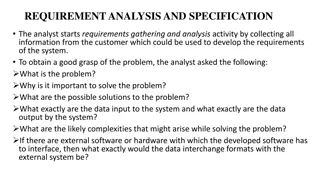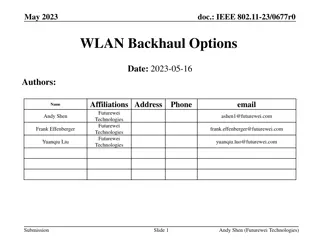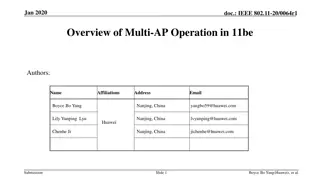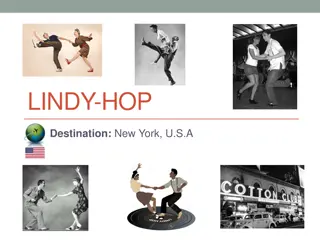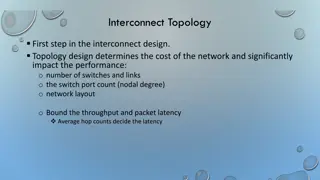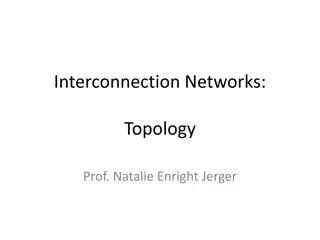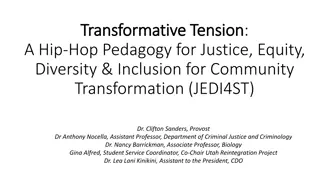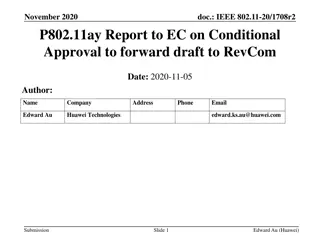11ay Functional Requirements for Multi-Hop, Backhaul, and Fronthaul
This document outlines the functional requirements for multi-hop transmissions in fronthaul and backhaul scenarios within the IEEE 802.11 TGay standard. It addresses the need for specific requirements in these use cases, proposing specifications to be included in the functional requirements document. The content discusses growing momentum towards wireless backhaul and fronthaul, citing various industry initiatives and projects. It also delves into backhaul range support and fronthaul latency requirements, providing insights into small-cell inter-node distances, outdoor backhaul range proposals, and necessary latency thresholds for supporting split architectures. The document offers a comprehensive overview of the challenges and considerations in enabling efficient multi-hop transmissions for wireless networks.
Download Presentation

Please find below an Image/Link to download the presentation.
The content on the website is provided AS IS for your information and personal use only. It may not be sold, licensed, or shared on other websites without obtaining consent from the author. Download presentation by click this link. If you encounter any issues during the download, it is possible that the publisher has removed the file from their server.
E N D
Presentation Transcript
November 2015 doc.: IEEE 802.11-15/1399r1 11ay Functional Requirements for Multi-Hop, Backhaul, and Fronthaul Date: 2015-11-09 Authors: Name Arnab Roy Affiliations InterDigital Communications, Inc. Address 781 Third Avenue King of Prussia, PA 19406 Phone 610-878-1830 Arnab.Roy@Interd igital.com email Doug Castor Phil Pietraski Joe Levy Rui Yang 2 Huntington Quadrangle, Melville, NY 11747 631-622-4141 Rui.Yang@Interdig ital.com Submission Slide 1 Arnab Roy, InterDigital
November 2015 doc.: IEEE 802.11-15/1399r1 Abstract The IEEE 802.11 TGay backhaul and data center use cases support multi-hop transmissions. Fronthaul and backhaul use cases are included in the usage models document. However specific requirements for these use cases are lacking. This document includes specifications for multi-hop transmissions for fronthaul and backhaul and we propose that the functional requirements document include these. Submission Slide 2 Arnab Roy, InterDigital
November 2015 doc.: IEEE 802.11-15/1399r1 Growing Momentum for Wireless Backhaul and Fronthaul There is growing interest in providing wireless backhaul and fronthaul as evidenced by the following: Dense small cells, C-RAN architecture, etc. are demanding higher capacity, lower cost, and ease of deploying transport to the network edge. Multiple ongoing international projects and standardization activities are focusing on fronthaul and backhaul: 3GPP (5G Workshop had several presentations on fronthaul and backhaul).[1] The EU 5GPPP Xhaul project. [2] The EU iJOIN project.[3] The ETSI mWT ISG.[4] Submission Slide 3 Arnab Roy, InterDigital
November 2015 doc.: IEEE 802.11-15/1399r1 Backhaul Range Support The backhaul use case[10] must support typical small-cell inter-node distances. Small-cells are typically installed on street furniture at street corners/intersections. The size of city blocks is generally less than 750 (250m), with some exceptions.[5] Inter-cell distances greater than 200m are more economical according to a Signals Research Group white- paper (See figure). [6] Field testing at mmWave frequencies has successfully closed the link at 200m range and extending this to 300m is considered feasible.[7] Proposed range for outdoor backhaul is 250m, whereas current functional specification indicates 100m Note for figure: Base = 300m Submission Slide 4 Arnab Roy, InterDigital
November 2015 doc.: IEEE 802.11-15/1399r1 Fronthaul Latency Support The Small Cell Forum (SCF) has recommendations on required Fronthaul latencies to support various split architectures[8]: MAC PHY SON OAM Apps PDCP RLC upper lower upper lower Split PHY MAC-PHY (FAPI) Split MAC RLC-MAC PDCP-RLC Services Split Architectures Bi-directional Data Rate Minimum latency type that supports split architecture PDCP RLC 250 Mbps Non Ideal 30 ms Proposed data rate and latency requirements are 5 Gbps and 2msec, respectively. This will satisfy all listed functional splits. Split MAC 250 Mbps Sub Ideal 6 ms MAC PHY 250 Mbps Near Ideal 2 ms Split PHY (III/IIIb: sub-frame symbol) 2/5 Gbps Near Ideal 2 ms Submission Slide 5 Arnab Roy, InterDigital
November 2015 doc.: IEEE 802.11-15/1399r1 Proposed text on 11ay functional requirement for multi-hop wireless transmissions Multi-hop Wireless Transmissions The TGay amendment provides a means of supporting multi-hop wireless transmissions with coverage extension scenarios for backhaul and fronthaul requirements for data rate, range and latency. LEGEND AP/PCP transmission range STA1/STA2 transmission range STA2 STA1 AP/PCP BSS/PBSS Coverage extension illustration Submission Slide 6 Arnab Roy, InterDigital
November 2015 doc.: IEEE 802.11-15/1399r1 Proposed text on 11ay functional requirement for backhaul and fronthaul System performance requirements for backhaul and fronthaul use cases are summarized in the following table: Parameter Value Description Data rate 250 Mbps 5 Gbps Backhaul, Fronthaul (Above MAC, Intra MAC, MAC-PHY, Intra PHY) splits, with QoS support. Range 250 m 1 km Latency 2 msec (one-way, end-to-end) Max. hops 5 Submission Slide 7 Arnab Roy, InterDigital
November 2015 doc.: IEEE 802.11-15/1399r1 References (1/2) [1] RAN 5G Workshop The Start of Something, Available: http://www.3gpp.org/news-events/3gpp-news/1734-ran_5g. [2] Xhaul: The 5G Integrated Fronthaul/Backhaul, Available: http://xhaul.eu/. [3] Interworking and Joint Design of an Open Access and Backhaul Network Architecture for Small Cells based on Cloud Networks, Available: http://www.ict-ijoin.eu/. [4] ETSI Millimeter Wave Transmission (mWT) ISG Portal: https://portal.etsi.org/tb.aspx?tbid=833&SubTB=833. [5] https://en.wikipedia.org/wiki/City_block. [6] Street Light Small Cells A Revolution in Mobile Operator Network Economics, White Paper by Signals Research Group, Oct. 2014, Available: http://www.interdigital.com/white_papers/street-light-small-cells?r=y. Submission Slide 8 Arnab Roy, InterDigital
November 2015 doc.: IEEE 802.11-15/1399r1 References (2/2) [7] Theodore S. Rappaport, Wonhil Roh, Kyungwhoon Cheun, Smart Antennas Could Open Up New Spectrum for 5G, IEEE Spectrum, Aug. 2014, Available: http://spectrum.ieee.org/telecom/wireless/smart- antennas-could-open-up-new-spectrum-for-5g [8] Small Cell Virtualization Functional Splits and Use Cases, Small Cell Forum (SCF), June 2015, Available: http://scf.io/en/documents/159_- _Small_Cell_Virtualization_Functional_Splits_and_Use_Cases.php. [9] 802.11ad-2012: Wireless LAN Medium Access Control (MAC) and Physical Layer (PHY) Specifications Amendment 3: Enhancements for Very High Throughput in the 60 GHz Band. [10] IEEE 802.11-2015/0625r3, IEEE TGay Use Cases, Rob Sun et al, Sep. 2015. Submission Slide 9 Arnab Roy, InterDigital
November 2015 doc.: IEEE 802.11-15/1399r1 Appendix Outdoor Link Budget Link budget using current 802.11ad parameters[9]: Parameter Symbol EU V-band min. gain and Tx power requirements d 250m PL 116 dB PT 10 dBm GT 30 dBi GR 30 dBi R 4.6/6.7 Gbps (12/24) Relaxed gain requirements 250m 116 dB 10 dBm 24 dBi 24 dBi 2.5/2.7 Gbps (9/18) Range Path Loss @ d Transmit power Tx Antenna Gain Rx Antenna Gain Supported data rate SC/OFDM* (MCS)[8] *Max. 802.11ad MCS for which PT+GT+GR-PL > Rx sensitivity NOTE: 802.11ad values assume NF = 10dB. For fronthaul/backhaul a smaller NF may be appropriate. Submission Slide 10 Arnab Roy, InterDigital
November 2015 doc.: IEEE 802.11-15/1399r1 Backup Submission Slide 11 Arnab Roy, InterDigital
November 2015 doc.: IEEE 802.11-15/1399r1 TGay Use Cases Involving Multi-Hop Transmissions Usage Model 4: Data Center 11ay Inter-Rack Connectivity Current specs. [5]: Range: 20 60 , Data Rate: 20-40 Gbps, Max. hops <= 5 Usage Model 7: Mobile Fronthauling Current specs. [5]: Data rate: ~20Gbps, Range: 200m, 99.99% availability, QoS Proposed parameters: Latency: <2ms (Near-Ideal), Data Rate: 5 Gbps at 250m (single hop), Range: <1km over multiple hops, QoS support. Usage Model 8: Wireless Backhauling Current specs. [5]: Data Rate: 2-20Gbps, Range: 1km(single hop) or multiple hops of 150m, Total latency: 35msec, QoS/QoE. Proposed parameters: < 1km over multiple hops, Data Rate: 1 Gbps at 250m (single hop), Total latency: <5ms (one-way, overall), QoS support. Submission Slide 12 Arnab Roy, InterDigital
November 2015 doc.: IEEE 802.11-15/1399r1 Multi-hop Transmissions in Usage Model 4: Data Center Inter-Rack Connectivity Link Capa city Link Descriptio n PER< [3] Dista nce Link Setup time Security (Confidentiality/ Integrity) Link s A<- >B >10 Gbp s ToR connects to EoR 10^- 2 <100ms C/I 20 [5] A<- >C >10 Gbp s ToR connects to EoR 10^- 2 <100ms C/I 40 E F A<- >D >10 Gbp s ToR connects to EoR 10^- 2 <100ms C/I 60 A<- >E >20 Gbp s EoR to Aggregat ed Switch (Multi- hop) 10^- 2 <100ms C/I 4 A C B D 11ay interfaces are best suit for backup interfaces when the fiber links are failed during emergency or network devices maintenances, As back up interfaces, no active link up are needed all the time but when the failure is occurred, the backup links are required to be quickly setup (<100 msec [4] setup time) Some of 11ay interfaces function as multi-hop links, i.e A<->E, Maximum # of hops <=5 E<- >F >20 Gpb s Aggregat ed Switch to SAN switch 10^- 2 <100ms C/I 4 Submission Slide 13 Arnab Roy, InterDigital
November 2015 doc.: IEEE 802.11-15/1399r1 Multi-hop Transmissions in Usage Model 8: Wireless Backhauling Requirements Single Hop Wireless Backhauling Multiple Hop Wireless Backhauling # of hops 1 <5 Distance per link <1km <150m Data Rate ~2-20Gbps ~2-20Gbps Latency <35ms <35ms (total ) QoS/QoE Yes Yes Availability 99.99% 99.99% Backhaul @60GHz Backhaul @60GHz Backhaul @60GHz 11ay AP 11ay AP 11ay AP 11ay AP N-LOS Access N-LOS Access BUS STOP BUS STOP POP Wireless backhauling with Multiple hops Submission Slide 14 Arnab Roy, InterDigital
